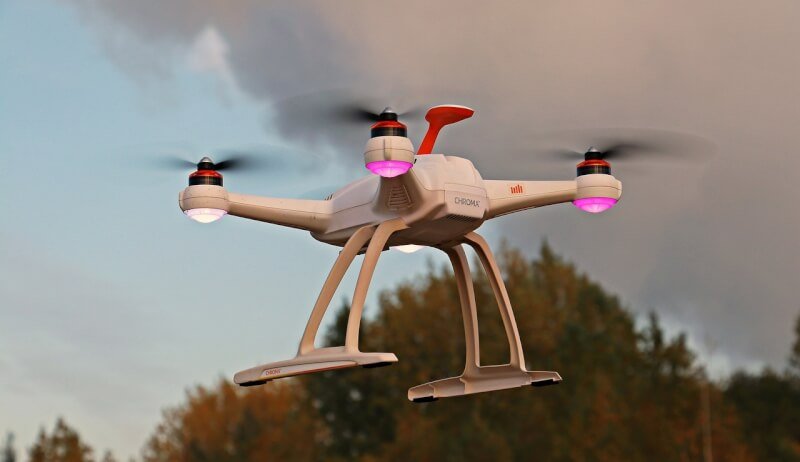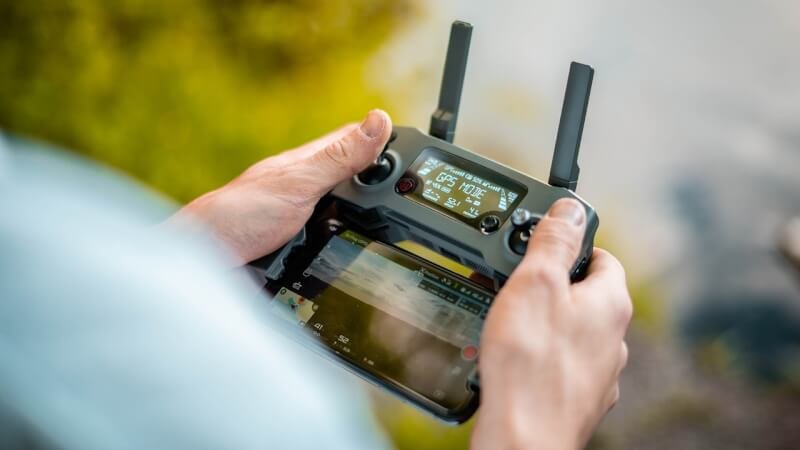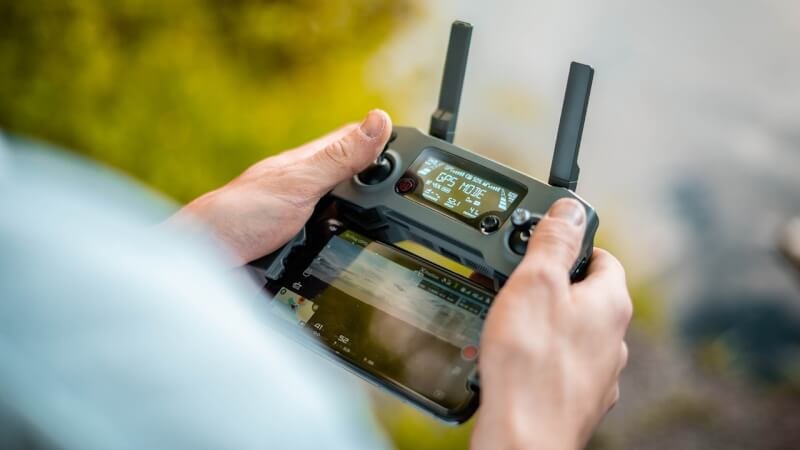When it comes to flying RC aircraft, it’s important to prioritize safety. Whether you’re a beginner or an experienced pilot, taking the necessary precautions ensures a smooth and enjoyable flight experience. From checking the weather conditions to maintaining a safe distance from people and property, this article dives into the key safety measures you should take every time you take to the skies with your RC aircraft. So buckle up and get ready to explore the world of remote-controlled aviation with peace of mind! Flying RC aircraft is an exciting and enjoyable hobby, but it’s important to prioritize safety. By following a few simple precautions, you can ensure a safe and enjoyable flying experience. From choosing the right flying area to staying updated on regulations, here are some essential safety tips for all RC aircraft enthusiasts.

Flying Area
Choose an open and unobstructed area
When selecting a location to fly your RC aircraft, it’s crucial to find an open and unobstructed area. This will minimize the risk of collision with buildings, trees, or other objects. A large field or park with plenty of open space is an ideal choice.
Avoid flying near people or animals
To prevent accidents and potential injuries, it’s essential to keep a safe distance from people or animals. Flying near crowded areas or places with a high population density increases the risk of accidents and may violate local regulations. Always prioritize the safety of those around you.
Keep a safe distance from buildings and trees
Maintaining a safe distance from buildings and trees is crucial to prevent crashes and damage to your RC aircraft. Flying too close to these objects increases the risk of collision, and wind gusts could potentially cause your aircraft to be blown into them. Give yourself enough space to maneuver safely.
Pre-flight Checklist
Inspect and maintain your aircraft
Before each flight, thoroughly inspect your aircraft for any signs of damage or wear. Check the propellers, control surfaces, and any other crucial components for any cracks or loose parts. It’s also essential to ensure that all screws are secure and that the battery is securely in place.
Check the weather conditions
Weather conditions can significantly impact the safety of your flight. Before taking off, check the current weather forecast, paying attention to factors such as wind speed and direction. Avoid flying in strong winds or turbulent weather conditions, as they may make it challenging to control your aircraft.
Ensure proper battery and signal strength
Having a fully charged battery is essential for a safe and successful flight. Make sure your battery is fully charged and in good condition before taking off. Additionally, check your signal strength to ensure a stable connection between your remote control and aircraft. Weak signals can lead to loss of control and potential accidents.

Remote Control
Know your remote control well
Familiarize yourself with your remote control and understand its functions before flying. Read the manufacturer’s instructions and spend some time practicing with it. Understanding how to properly navigate your aircraft and make adjustments will greatly enhance your control and overall safety.
Keep the control’s batteries charged
Having a reliable power source for your remote control is crucial. Make it a habit to regularly charge your control’s batteries and carry spare batteries with you just in case. This will ensure that you always have the necessary power to guide your aircraft safely.
Avoid using damaged or malfunctioning controls
Using damaged or malfunctioning controls is a safety risk and can lead to accidents. Regularly inspect your remote control for any signs of wear or damage. If you notice any issues, such as unresponsive buttons or intermittent connectivity, replace or repair the control before flying.
Safety gear
Wear protective goggles or glasses
Protecting your eyes is of utmost importance when flying RC aircraft. Wear proper protective goggles or glasses to shield your eyes from potential debris or fragments that may be propelled during flight. Even in calm conditions, unexpected incidents can occur, so it’s best to prioritize eye safety at all times.
Use gloves for added safety
Gloves can provide protection against potential injuries, especially when handling the aircraft or in case of a crash. Opt for gloves with a good grip that allow you to have a firm hold on the remote control while still maintaining flexibility and maneuverability.
Consider a helmet for added head protection
While a helmet may not be a requirement for all RC aircraft enthusiasts, it can provide an extra layer of protection, particularly during outdoor flights. A helmet can protect your head from falling debris or potential accidents, ensuring your safety in case of any unforeseen circumstances.

Flight Rules
Fly at a safe altitude
Always fly your RC aircraft at a safe altitude that allows for proper control and maneuverability. Avoid flying too high, as it may become challenging to maintain line of sight and control. Additionally, flying too close to the ground can increase the risk of collisions, so find a balance that ensures safe operations.
Fly within your line of sight
Maintaining visual contact with your aircraft is essential for safe flying. Fly within your line of sight at all times, avoiding flying too far away or behind obstacles that obstruct your view. Flying within your line of sight enables you to respond quickly to potential hazards and make necessary adjustments efficiently.
Respect no-fly zones and airspace regulations
Be aware of any no-fly zones or airspace regulations in your area. It is crucial to respect these restrictions to ensure the safety of other aircraft and people in the vicinity. Familiarize yourself with local regulations and stay informed about any changes to prevent any violations or risks.
Emergency Situations
Prepare for possible emergencies
Even with the best precautions, emergencies can occur. Being prepared for such situations is essential for quick and effective action. Carry a basic emergency kit with you that includes items such as a fire extinguisher, first aid supplies, and contact information for emergency services.
Know how to perform an emergency landing
Understanding how to safely perform an emergency landing is a crucial skill for all RC aircraft pilots. Practice emergency landing techniques in a controlled environment to familiarize yourself with the necessary procedures. This will enable you to respond quickly and safely in case of an unexpected situation.
Be aware of emergency procedures for different situations
Different situations may require different emergency procedures. Familiarize yourself with emergency procedures specific to your aircraft and be prepared to react accordingly. Knowing what steps to take in case of a battery failure, signal loss, or motor malfunction can significantly increase your ability to handle emergency situations.
Noise and Disturbance
Consider noise restrictions in your area
RC aircraft can produce significant noise levels, especially during takeoff and landing. To be considerate to others, check whether any noise restrictions are in place in your area and adhere to them. Respecting noise regulations will help maintain positive relationships with neighbors and ensure the enjoyment of your hobby for all.
Avoid flying during early mornings or late evenings
Choosing appropriate flying times can help minimize disturbance to others. Flying during early mornings or late evenings can be particularly disruptive to people who may be sleeping or trying to relax. Aim to fly at reasonable times, taking into account the local noise regulations and community preferences.
Be respectful of others’ privacy and property
When flying your RC aircraft, always respect others’ privacy and property. Avoid flying too close to people’s homes or private properties. Maintain a safe distance to prevent intrusions and respect the boundaries and privacy of others. Being considerate will not only ensure a positive flying experience but also foster good relationships within the community.
Avoid Flying Alone
Fly with a spotter if possible
Having a spotter with you during your flights can significantly enhance safety. A spotter can help you maintain situational awareness, warn you of potential hazards, and assist in maintaining line of sight. Having an extra set of eyes can provide a valuable safety net and contribute to a smooth and secure flying experience.
Join a local RC flying club for assistance
If you’re new to RC aircraft or want to enhance your skills, consider joining a local RC flying club. These clubs offer opportunities to connect with experienced pilots who can provide guidance, offer advice, and share their knowledge. The collective expertise of fellow enthusiasts can contribute to a safer and more satisfying flying experience.
Inform someone about your flying plans
Whenever you plan to fly your RC aircraft, it’s a good practice to inform someone about your intentions. Share your flying plans with a family member, friend, or fellow pilot, including the location and estimated duration of your flight. This ensures that someone is aware of your activity and can raise the alarm if necessary.
Training and Experience
Practice flying in a controlled environment
If you’re a beginner or looking to improve your flying skills, it’s advisable to practice in a controlled environment. Flying in an open field or dedicated RC flying area allows you to focus on maneuvering, gain confidence, and refine your control. Gradually introduce more challenging environments as you gain experience and proficiency.
Seek guidance from experienced pilots
Learning from experienced pilots can greatly accelerate your progress and help you avoid common mistakes. Reach out to experienced pilots within your local RC community or flying clubs. They can provide valuable insights, tips, and techniques that will enhance your safety and ensure more enjoyable flights.
Gradually increase the difficulty of maneuvers
As you gain experience and confidence, you may want to try more advanced maneuvers with your RC aircraft. It’s important to progress gradually and master each skill before moving onto the next. Pushing yourself too fast can lead to accidents and compromises on safety. Take your time, practice, and enjoy the learning process.
Stay Updated
Keep up-to-date with local regulations
Regulations related to RC aircraft can vary depending on your location. Stay informed about the rules and guidelines specific to your area. Regularly check for any updates or changes to ensure you are in compliance and to maintain a safe flying experience that is in line with the legal requirements.
Stay informed about changes in RC aircraft rules
The rules and regulations regarding RC aircraft may change over time. Stay informed about any updates or modifications to these rules. This can be done through official websites, government publications, or local hobby shops. Being aware of changes will help you stay on top of safety practices and remain in compliance.
Follow safety guidelines from reputable sources
To ensure the highest level of safety, rely on safety guidelines and recommendations from reputable and trusted sources. These may include manufacturers, aviation authorities, and RC flying organizations. By following established safety guidelines, you can minimize risks, prevent accidents, and enjoy your RC flying to the fullest.
Flying RC aircraft is a thrilling and rewarding hobby. By adhering to these safety precautions, you can have a safe, enjoyable, and responsible experience. Remember to choose an appropriate flying area, conduct a pre-flight checklist, use safety gear, follow flight rules, be prepared for emergencies, and seek ongoing training and guidance. With a commitment to safety, you can fully embrace the excitement of RC aircraft flying while ensuring the well-being of yourself and those around you.


